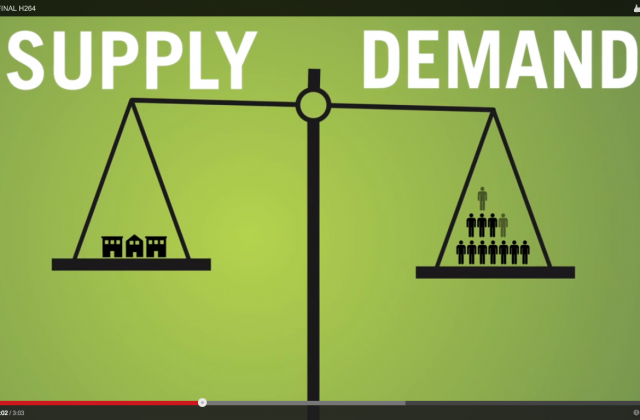Crosscut: More Housing Means We Can Use Public Resources Wisely
Crosscut recently posted an article, Affordable housing? It’s on Seattle’s wealthy, calls for building lots of publicly owned housing by taxing “the rich.” We support public investment in housing, especially through programs like the Multifamily Tax Exemption (MFTE) program that uses deferred tax revenue to incentivize creation of rent restricted units and vouchers. The building of subsidized housing units should be a last resort and only for those who need wrap around services and who earn little or no income. Here’s my response from a post on Facebook’s City Builder group.
Where to start.
First, if we know that when something is scarce and in demand then what follows is higher prices. We are for increasing supply by allowing housing producers to build more housing. This will positively impact price and in favor of people who need housing by making the market more competitive.
If you deny that increasing supply has this effect, then you will reach different conclusions. And like climate change not being a hoax because it’s cold outside today, supply’s relationship to price is real even though that new building down the street is charging $2100 for a new apartment.
With more supply, the private sector takes the risks and gets the benefit of production — and the loses when demand tanks. Producers can meet almost all the housing demand out there if they are allowed. Almost everyone has a cell phone today, and many have smart phones. This is because they are not artificially scarce through regulatory limits on production.
When the market fails to meet demand, that is when some buyers in the market cannot pay enough rent to cover the costs of production, financing, and operations, we ought to consider subsidies as a solution.
But we must be efficient with those subsidies. Non-profit subsidized housing is incredibly difficult to build and operate. One figure I recently heard is that along with high per unit costs (as much as $500,000 per unit) operating costs can be as much as $7500 per unit per year; that’s $1,500,000 a year for 200 units. It is extremely inefficient to build pricey units for people that are paying a hundred or even a few hundred dollars more rent than the normative standard (which is sloppy, but that’s another conversation). Rather we would start subsidies with a cash payment monthly to offset the cost burden of housing — or other costs.
When we’d done that, then we could consider who’s still left over, unable to pay and perhaps needing more than just a roof over their head. For this segment of the market, manageably small, we could build publicly owned housing.
The notion of shaking down the market and taxpayers for thousands of units for people who are already housed is absurd, inefficient, and unnecessary. Waiting around to do that makes it irresponsible too. It’s time to get out of the way of the market and let it solve as much of the problem as it can, then efficiently solve the rest of the problem with resources gathered from broad and fair taxation, particularly taxes on ineffecient use of land: single-family homes.


